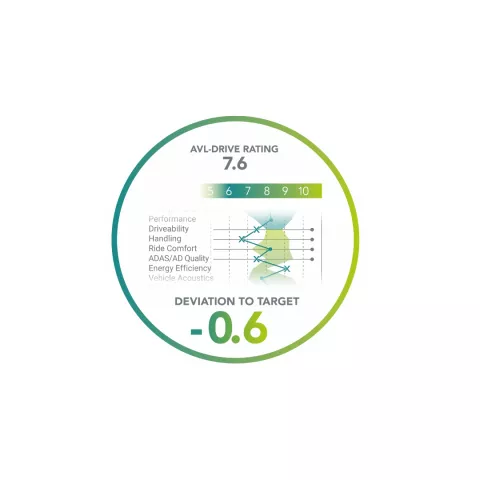The measuring system records various sensor and CAN bus signals, such as longitudinal acceleration, engine speed, vehicle speed, pedal settings, and vibrations. The DMU (drive main unit) forwards this input to the AVL-DRIVE™ software for further processing.
More than 200 different driving modes for driveability, driving comfort, handling, and ADAS are recognized automatically, and more than 450 criteria are evaluated objectively in real time. Several overlapping maneuvers can be detected and evaluated simultaneously in the process.
An insight-driven data analysis is accelerated by graphical representation of the test results. The automatic generation of reports and the automatic creation of benchmark libraries enable test results to be communicated quickly.
Based on a benchmark analysis, quality targets are defined for vehicle attributes. These are used as a reference for evaluating the vehicle attributes throughout the development process.
Frontloading the development of handling characteristics not only reduces the number of vehicle tests required, but also reduces costs. Having parallel development as an option in early phases also improves the quality.
A closed optimization process incorporating AVL-DRIVE™, AVL VSM™, AVL PUMA Open™, and AVL CAMEO™ ensures new efficiency – in vehicle development and simulation, as well as on engine and/or propulsion system testbeds.


